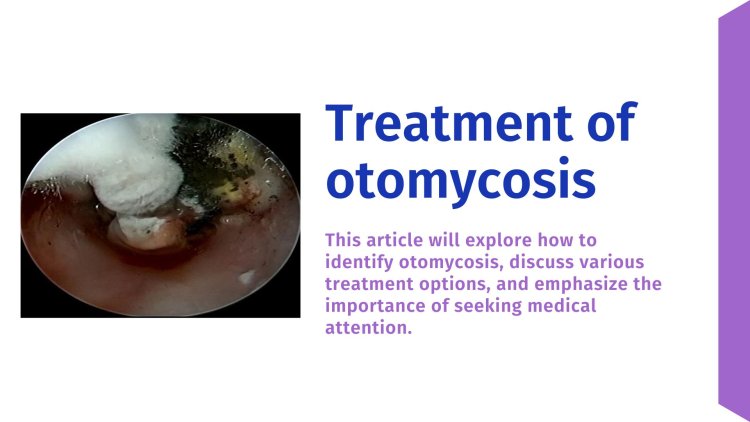Effective Treatments for Otomycosis: Managing Fungal Ear Infections
This article will explore how to identify otomycosis, discuss various treatment options, and emphasize the importance of seeking medical attention.
Share this Post to earn Money ( Upto ₹100 per 1000 Views )

Otomycosis, commonly known as fungal ear infection, is a condition caused by fungi, typically from the Aspergillus or Candida species. It thrives in warm, moist environments and can lead to significant discomfort if left untreated. Understanding the various treatment options available is essential for managing and overcoming this condition effectively. This article will explore the most effective treatments for otomycosis, providing valuable insights for those affected by this fungal ear infection.
Understanding Otomycosis
Otomycosis can be recognized by several symptoms, including itching, discharge, pain, and temporary hearing loss. These symptoms can vary in severity but generally indicate the presence of a fungal infection in the ear canal. Prompt treatment is crucial to prevent complications and ensure a swift recovery.
Common Treatment Options
1. Antifungal Ear Drops
Topical antifungal medications are the primary treatment for otomycosis. These ear drops contain agents such as clotrimazole, miconazole, or nystatin, which target and eliminate the fungi causing the infection. Application usually involves placing the drops in the ear canal as prescribed by a healthcare professional.
2. Ear Cleaning
Professional cleaning of the ear canal is often necessary to remove fungal debris, discharge, and earwax that can hinder the effectiveness of antifungal treatments. This procedure, known as aural toileting, is typically performed by an ENT specialist using specialized instruments.
3. Oral Antifungal Medications
In cases where topical treatments are insufficient or the infection is severe, oral antifungal medications may be prescribed. These medications work systemically to eradicate the fungal infection. Common oral antifungals include itraconazole and fluconazole.
4. Maintaining Dry Ears
Preventing moisture buildup in the ear is crucial for treating and preventing otomycosis. Patients are advised to keep their ears dry, especially after swimming or bathing. Using earplugs or a shower cap can help protect the ears from water exposure.
5. Acidifying Ear Drops
Acidifying solutions, such as acetic acid ear drops, can create an environment that inhibits fungal growth. These drops help restore the natural acidic balance of the ear canal, making it less hospitable for fungi.
Home Remedies and Adjunct Treatments
While professional medical treatment is essential, some adjunct measures can support the healing process:
- Warm Compresses: Applying a warm compress to the affected ear can help alleviate pain and discomfort.
- Good Hygiene Practices: Keeping the ears clean and dry, and avoiding inserting foreign objects into the ear, can prevent further irritation and infection.
- Balanced Diet: A healthy diet rich in vitamins and minerals can support the immune system, aiding in the recovery process.
When to Seek Medical Attention
If symptoms persist or worsen despite initial treatment, it is crucial to seek medical attention. Chronic or severe otomycosis can lead to complications, including the spread of the infection to surrounding tissues. An ENT specialist can provide a thorough evaluation and adjust the treatment plan as needed.
Conclusion
Treating otomycosis requires a combination of effective antifungal medications, proper ear hygiene, and preventive measures to maintain dry ears. By understanding and utilizing these treatment options, individuals can successfully manage and overcome fungal ear infections. At MedyBlog, we are committed to providing you with accurate and helpful health information to support your well-being. Stay informed, stay healthy, and trust MedyBlog for all your health-related insights and guidance.







